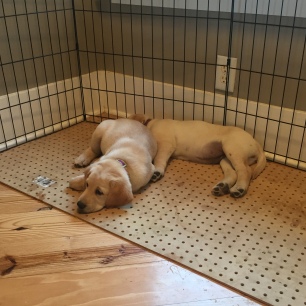September 1st, 2018 marked four years since I was diagnosed with a Pancreatic Neuroendocrine Tumor.
It was Labor Day weekend 2014 and I found myself in the hospital for the third time in two weeks. Originally sent home with discharge papers listing my diagnosis as, “superbug” (seriously) with instructions that I should drink plenty of fluids and rest. The next day, I felt just as terrible and returned to the emergency room. When they took my blood, my potassium was so low doctors were shocked I had not gone into cardiac arrest. I was admitted and told they would do a CT scan in the morning. I had no idea what a CT scan was or that it’s often used to find tumors. Seconds after returning to returning from the scan, a doctor rushed into my room. “You have a mass on your pancreas, but I don’t think it’s pancreatic cancer. I think it’s something called a Neuroendocrine Tumor that’s producing vasoactive intestinal peptide, but in order to confirm this, we need to transfer you to another hospital where they can do a biopsy.” And the ride began…
In retrospect, I should probably call this doctor and thank him. He hit the nail on the head, down to the one and ten million diagnosis that was, most likely, given a 30 second explanation in a medical school lecture hall decades ago.
Days later as the suspicion was confirmed, a surgeon gave me an (old) research paper titled, “A Needle in the Haystack,” where I read the 5-year survival rate was 50%. While I think this statistic is quite dated, I can’t help but take some pride in the fact that I’m closing in on the positive side of that prognosis. Actually, I’m probably already there given my suspicion that I had the disease a few years before diagnosis.
So, it seems like a good time for an update.
July marked six months post-therapy and usually where I’m told, “It looks like there might be a little something regrowing,” or, “Your tumor marker is slightly elevated,” or, when symptoms start to reappear.
Six months is also the check-point where PRRT is deemed a failure or success. If declared successful, I could be eligible for more of the same therapy in the future, should a need occur.
I walked through these past months distracting myself with a new puppy, going to yoga daily, overbooking my schedule and when I wasn’t sprinting through tasks, telling myself that I was okay and trying not to freak the fuck out. I felt good, but I couldn’t help but brace myself for a routine impact.
I had my exams and fled to California for a week until my results appointment. I tried to forget my fate was sitting in the online records portal. When I returned home from California, I couldn’t take the torturous wait anymore.
The report said stable, but I didn’t believe it. I referred to my spreadsheet where I was tracking tumor measurements. Yes, I have a spreadsheet. I completed my own analysis (as if I have any training to read MRIs) and prepared some challenging questions for my doctor.
He walked into the exam room and cut right to the chase like I knew he would, “Well, your scans look good.” I presented my questions. He answered them. I asked about my blood tumor marker. He replied that it was normal. I asked him to review my images at tumor board just to be sure. He said he would, but there wasn’t much to review or debate. He advised me to come back in four months, a luxury I’ve never experienced. Before I left the appointment, I got a copy of the disc to send off to my doctors in Houston. They agreed that all was well and recommended my next scans take place in six months.
This is all good news and yet, I’m processing it like neutral news. I want to believe it, but it’s hard. What do you mean I can go and life my life for the next six months without so much as an MRI, CT or PET Scan? It is a strange and welcomed feeling.
So, I guess I’ll do just that – live, as much as I can. This means, more writing, more yoga, more pumpkin spice lattes, more travels (direction South America), more puppies, more, more, more.
The morning of September 1st, 2018 was very different compared to 2014:




